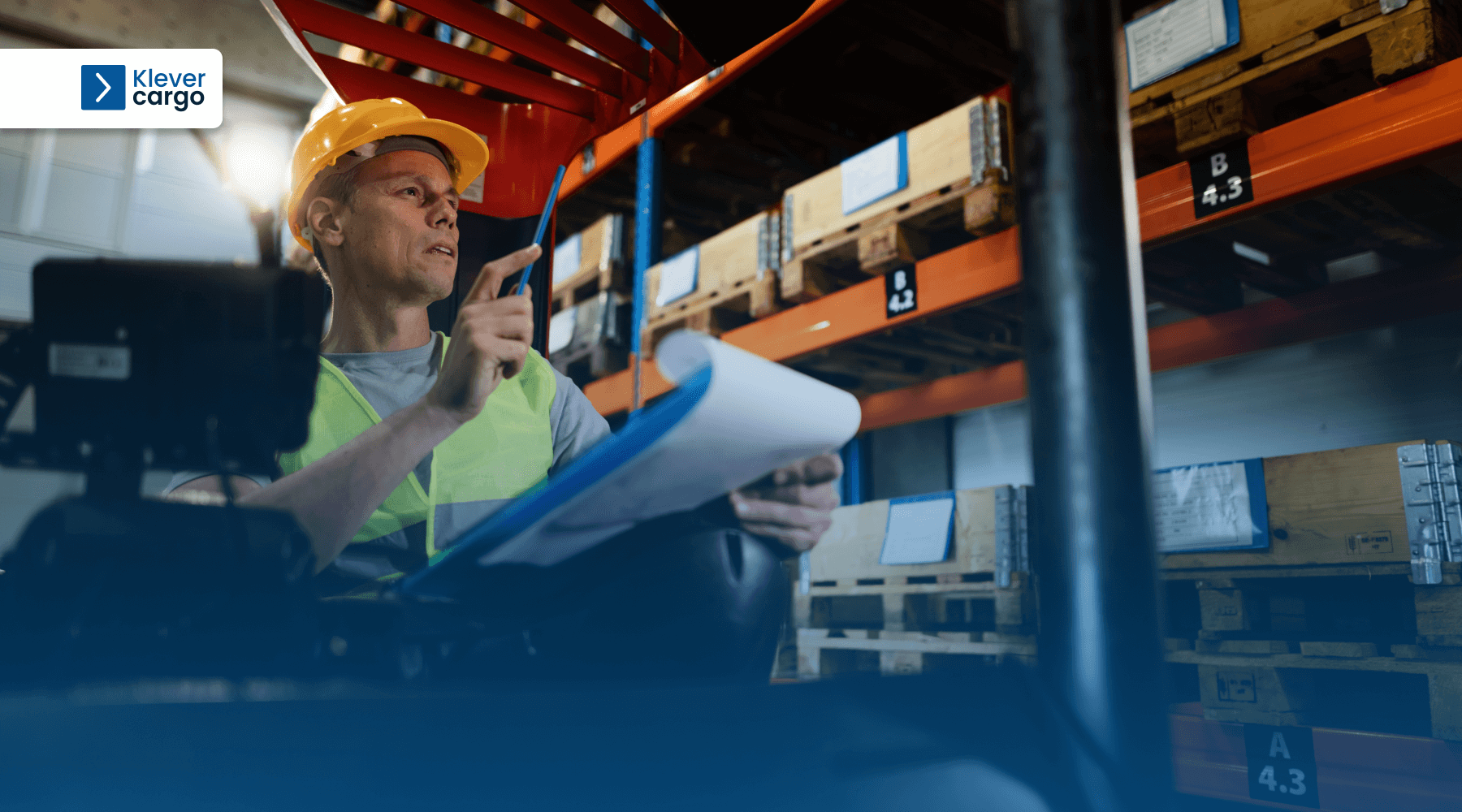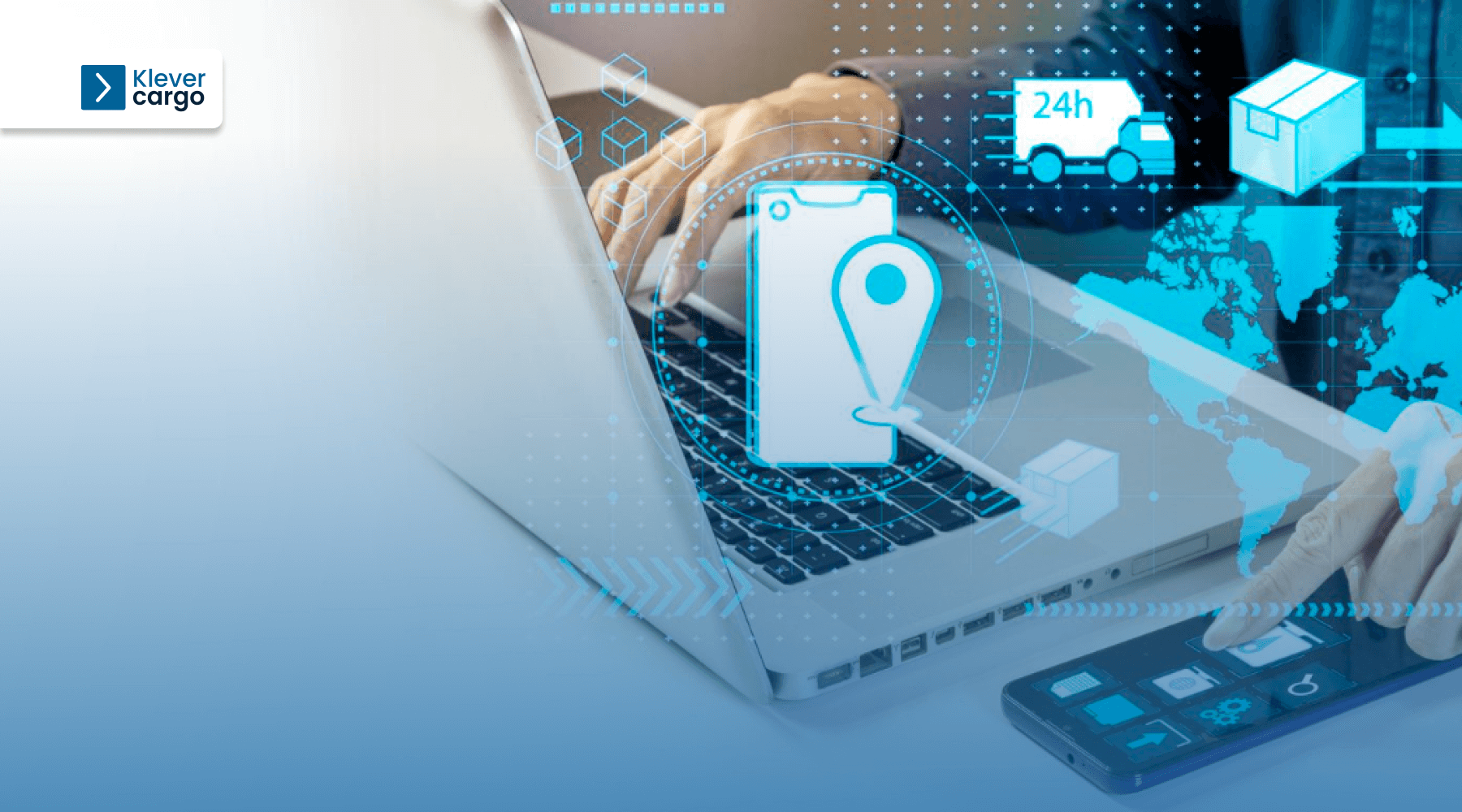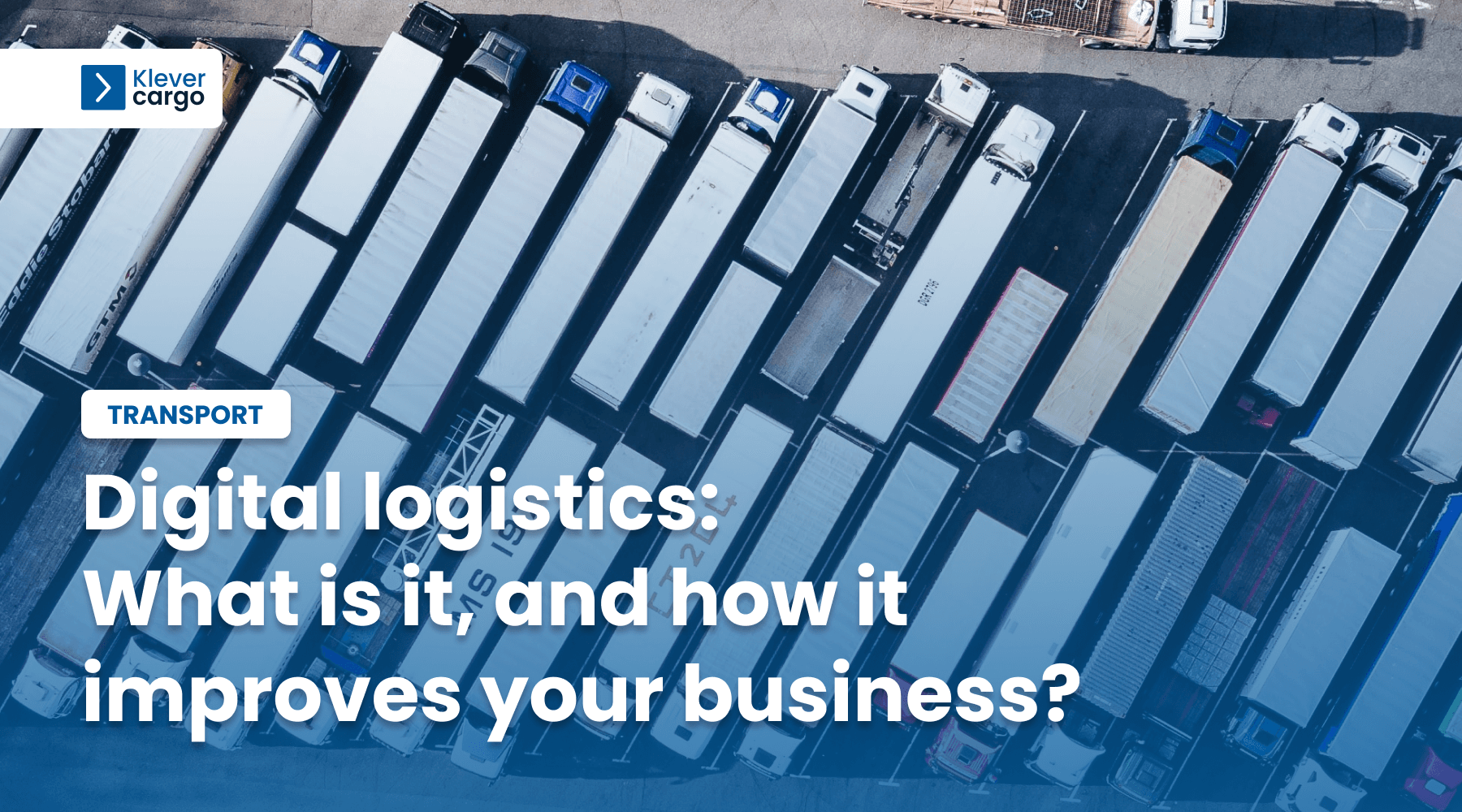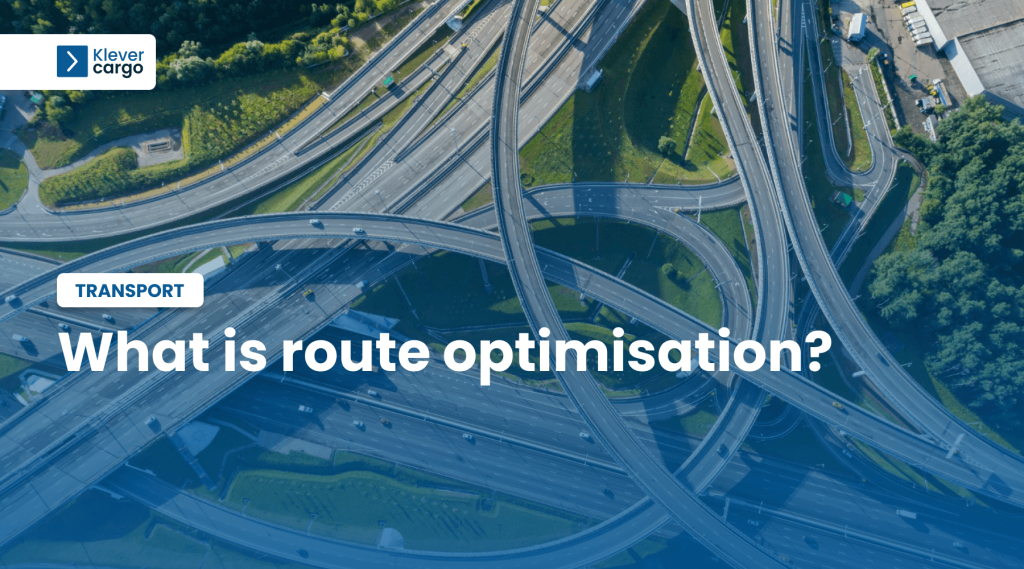Digital logistics is the use of technology and digital platforms to optimise the flow of goods and information in a supply chain.
Digitalisation in businesses has become a central part of development. As every industry benefited from digitalisation, transport and logistics were no different. Advancements like IoT, AI, and cloud computing made everything cheaper and more manageable. Employees didn’t have to rely on pen and paper.
That made them more efficient since things started moving a lot faster. Of course, the customers loved the responsiveness of their trusted companies. Companies realise they can’t keep up with the competition if they don’t apply digital solutions. That makes digital logistics the future of the transport and logistics industry.
Understand digital logistics

In digital logistics, everything revolves around technology and tools. In the past, logistics employees had to use pen and paper to track the inventory. If they wanted to contact their partners and customers, phone or fax were their only options. They could only rely on physical documentation to keep track of shipments.
Those options were time-consuming, and there were many errors due to too many things to take care of. However, things got a lot easier when digital logistics became an option, as it introduced technology-based solutions and revolutionised the industry. They managed to do that by automating tasks, real-time visibility, and optimising operations.
How is digital logistics transforming the future of logistics?

Digital transformation in logistics is all about adopting technology-based solutions. Companies can replace old methods with new, simpler solutions with these tools.
Things like real-time tracking enabled visibility improvements. They didn’t have to rely on dozens of physical documents to keep track of their shipments. Instead, everything shifted to digital documentation.
Staying efficient in your workflow is crucial to staying competitive in the market. That made task automation an excellent tool for getting things done faster. Another vital thing for succeeding in this industry is predicting market trends.
Companies started using predictive analytics to stay one step ahead of the competition. With those analytics, they can predict the high demand for a particular product. That information can help them adjust their inventory levels. Of course, that prevents having too many or too few products.
Why is digital logistics necessary?

Digital logistics is essential for several reasons, including:
Real-time tracking and visibility
Digital logistics enable companies to track their shipments and assets in real-time. This improves efficiency, reduces delays, and optimises inventory levels.
Automation of processes
Automation helps companies to automate repetitive and time-consuming tasks. Those include documentation, invoicing, and routing. This reduces the risk of errors and allows workers to focus on other, more critical tasks.
Optimisation of routing and inventory
Route optimisation software allows for choosing the most effective route. It results in reduced fuel costs and improved delivery times. A company can also use inventory optimisation to ensure they have the right items in stock.
Sustainability
Green technologies and reducing waste are the key to sustainability. Therefore, they can be significant to customers and investors. Also, there are a lot of customers who appreciate sustainable companies.
The Difference between traditional and digital logistics

Manual vs automated processes
Traditional logistics rely heavily on manual processes. Digital logistics involves the automation of many tasks through technology and software.
Paper-based vs digital documentation
Traditional logistics rely on paper-based documentation for tracking and managing shipments, while digital one uses digital documentation and real-time tracking.
Limited visibility vs real-time visibility
Traditional logistics provide limited visibility into the supply chain. Digital logistics provides real-time visibility. That is possible with digital tools like sensors or GPS.
Reactive vs proactive approach
Traditional logistics often react only when a problem has already happened. With digital logistics, you can take a proactive approach. Digital tools allow you to identify potential issues in advance.
Human error vs reduced errors
Human error is widespread in traditional logistics. Digital logistics reduces the risk of errors through automation and digital solutions.
Digital logistics advantages

Faster delivery times
Digital logistics allow faster order processing with automation and machine learning. As a result, problems and delays are noticed much quicker, and communication is more efficient. Those things improve the delivery times. That is especially visible when you set up loads with a reliable platform.
But, regardless of how fast and productive you are, you won’t be able to use that potential when you’re struggling to find loads. This is especially visible when working with a faulty platform or needing to move a truck quickly. Yet, platforms like KleverCargo allow you to bid for a load within a few clicks.
All the documentation, bids, and won loads are on a single platform. That makes it convenient and straightforward. Additionally, it’s effortless and a great way to find extra cargo and earn more money.
Better customer experience
Digital logistics can enhance the customer experience by providing real-time updates on shipments. They can easily track the shipment and always know how far it reaches. Also, they can communicate with carriers through digital channels, which gives more transparency and reduces the risk of errors and delays.
Furthermore, they can offer self-service portals and personalised services based on customer preferences. By utilising those benefits, customers can set their delivery preferences. For example, they can choose when they want their product delivered. These things drastically improve customers’ satisfaction and loyalty.
Increased agility
Increased agility is a significant advantage because it allows companies to respond to market changes. This helps to reduce lead times, improve inventory management, and optimise transportation modes.
With agility, companies can adapt a lot faster to any changes. Also, it helps with faster problem identification.
Sustainability
Sustainability is another great benefit. Companies can use digital solutions for environmentally friendly results. They can reduce fuel consumption and reduce waste, which benefits the environment and cost savings for the company.
They also allow companies to track sustainability levels, which becomes crucial for customers and investors. Companies can improve their reputation and attract environmentally conscious customers with more sustainability.
Improved efficiency
By switching to digital logistics, companies will become drastically more efficient. They can automate processes and optimise transportation routes. And with data analytics, they can make better decisions. Of course, the more efficient you are, the more work will get done in less time. Improved efficiency in digital logistics can lead to more profit and customer satisfaction.
Digital logistics disadvantages

High setup costs
Digital logistics require using new hardware and software, which, of course, costs money. Besides, employees won’t be familiar with these digital tools. That brings up the costs of training.
These costs are especially difficult for small businesses that can’t afford those investments. Furthermore, complicated digital logistics tools can increase the risk of technical issues. Those issues and downtime can lead to more expenses.
Data privacy concerns
Since digital logistics rely on technology, a lot of data will be used to track goods, customer data, and business practices. If this data is not secure, it can cause potential privacy breaches. Those breaches can harm individuals or businesses.
Furthermore, the use of data analytics can cause other issues. Some are profiling individuals or sharing data with third parties without consent. Thus, you need to protect data in digital logistics systems carefully.
Complex regulations
With digitalisation, you’ll use various technologies like IoT, blockchain, and AI. These tools may require different laws and regulations you need to follow. Unfortunately, rules and laws can be different for every country. That makes it more complicated to get all the required information. You can get sued or other financial penalties if you don’t comply with those rules. Because of that, you need to thoroughly examine the rules before using digital tools.
Newest trends in digital logistics

The newest and most popular trends in digital logistics are:
Data Analytics and AI
Using technology to optimise logistics processes, increase efficiency, and reduce costs.
Blockchain technology
Increasing transparency and security of the supply chain.
IoT devices and sensors
Enabling real-time tracking and monitoring of goods. They improve accuracy and reduce delivery times.
Eco-friendly logistics solutions
Using electric vehicles and green logistics to avoid harming the environment.
Digital twins
Creating a digital twin of a physical supply chain to optimise logistics operations in a virtual environment.
Digital logistics is the future, and the future is now

If you decide to stick with traditional logistics, it’s only a matter of time before the competition goes ahead. Specific systems worked in the past because there were no better alternatives. But now that digital logistics has taken over, many better solutions are available.
Many new things are entering the market. One of those is a digital load board, which is among the best ways to speed up your workflow. And with countless benefits these tools offer, it’s a switch that every company needs to go through. Enter the new era and discover why digital logistics are the future.


